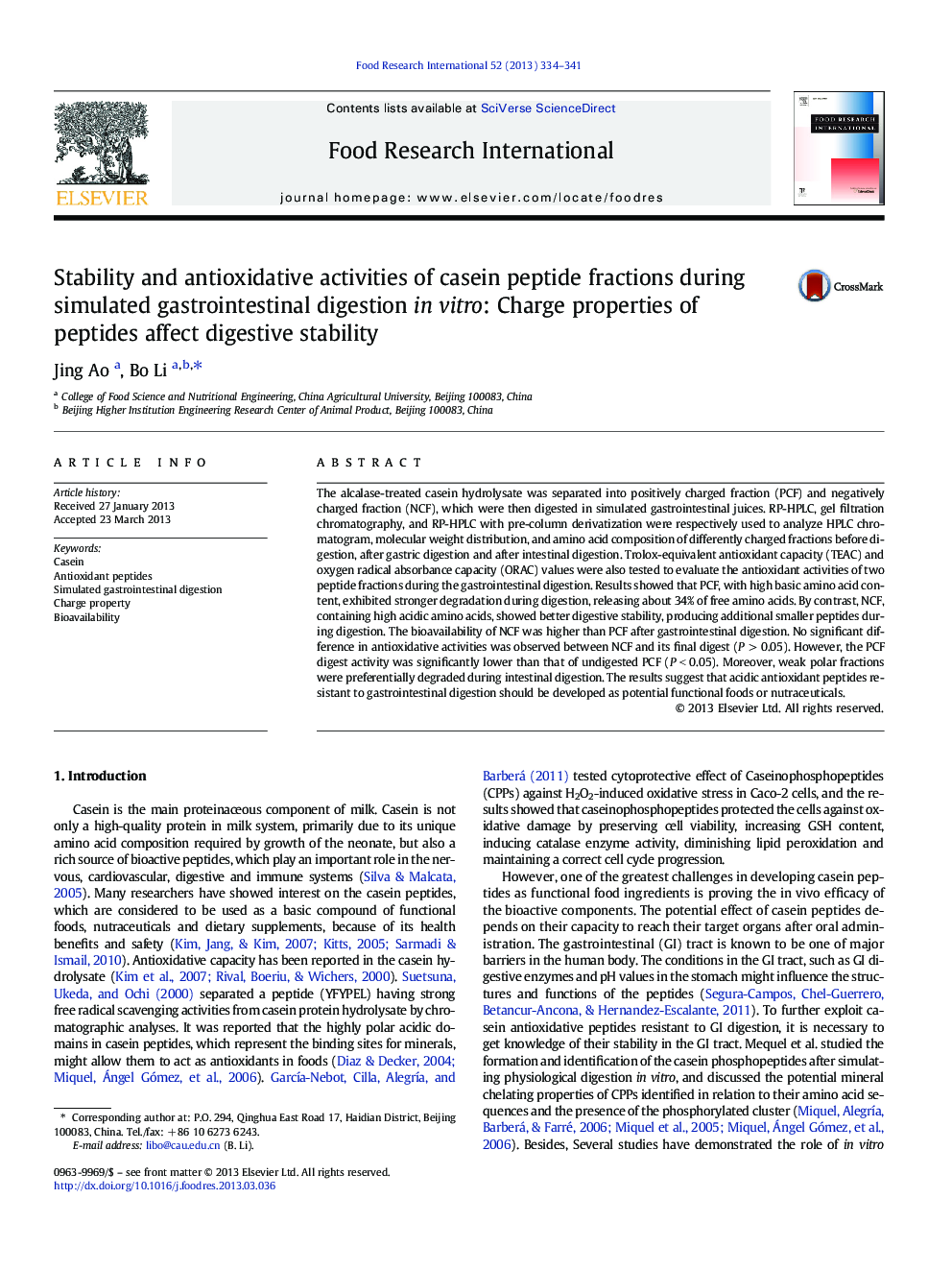| Article ID | Journal | Published Year | Pages | File Type |
|---|---|---|---|---|
| 6398253 | Food Research International | 2013 | 8 Pages |
â¢Both acidic peptides and basic peptides possessed high antioxidative activity.â¢Acidic peptide fractions showed better digestive stability in vitro.â¢Antioxidant efficacy of negatively charged peptides reserved almost 100%.â¢The weak polar fractions were preferentially degraded during intestinal digestion.â¢Acidic peptides could be potential antioxidants resistant to digestive enzymes.
The alcalase-treated casein hydrolysate was separated into positively charged fraction (PCF) and negatively charged fraction (NCF), which were then digested in simulated gastrointestinal juices. RP-HPLC, gel filtration chromatography, and RP-HPLC with pre-column derivatization were respectively used to analyze HPLC chromatogram, molecular weight distribution, and amino acid composition of differently charged fractions before digestion, after gastric digestion and after intestinal digestion. Trolox-equivalent antioxidant capacity (TEAC) and oxygen radical absorbance capacity (ORAC) values were also tested to evaluate the antioxidant activities of two peptide fractions during the gastrointestinal digestion. Results showed that PCF, with high basic amino acid content, exhibited stronger degradation during digestion, releasing about 34% of free amino acids. By contrast, NCF, containing high acidic amino acids, showed better digestive stability, producing additional smaller peptides during digestion. The bioavailability of NCF was higher than PCF after gastrointestinal digestion. No significant difference in antioxidative activities was observed between NCF and its final digest (PÂ >Â 0.05). However, the PCF digest activity was significantly lower than that of undigested PCF (PÂ <Â 0.05). Moreover, weak polar fractions were preferentially degraded during intestinal digestion. The results suggest that acidic antioxidant peptides resistant to gastrointestinal digestion should be developed as potential functional foods or nutraceuticals.
